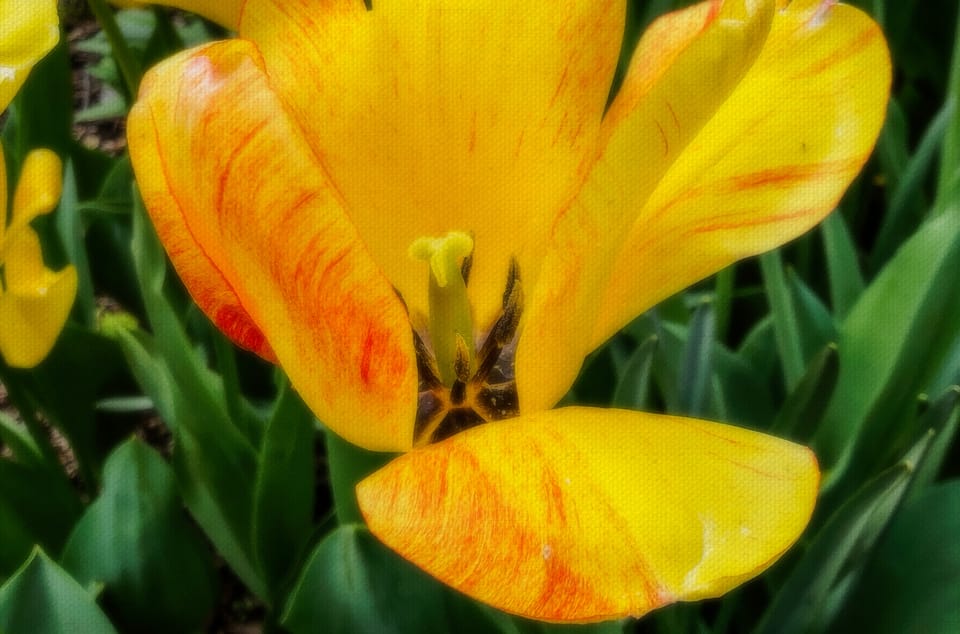Flowers make yellow look easy

Letter No. 81: Includes gratuitous use of Goethe and probably your first ever encounter with a paragraph that includes mention of both Caligula and Ceninni.
We find from experience that yellow excites a warm and agreeable impression…The eye is gladdened, the heart expanded and cheered, a glow seems at once to breathe toward us. — Goethe
That’s one view. For another, said Degas, “What a horrible thing yellow is.” Well okay then, sourpuss. Though from a certain perspective he had a point.
For centuries, humans have gone to a lot of trouble and risk to produce yellow paint. The ancient Egyptians knew about deriving yellow pigment from the mineral orpiment, as did the Romans, who called it auripigmentum, “gold paint.” People claimed the ghastly emperor Caligula could extract gold from it, but Pliny called bullshit on that one. Paint made from orpiment was indeed yellow but not suited for frescoes and reacted badly with other pigments. But it had a more serious drawback: it consisted of arsenic trisulphide. Ceninno Ceninni warned, “Beware of soiling your mouth with it, lest you suffer personal injury.” Such as death by arsenic poisoning. There was a reason the Romans mined it with slave labor.
Another source of yellow was gamboge. Did I mention going to trouble? For gamboge: 1) Nurture Garcinia trees in Southeast Asia for at least 10 years. 2) Cut deep gouges into their trunks. 3) As it trickles out, catch the sap in hollow bamboo tubes. 4) Wait a year or so for the sap to harden. 5) Shatter the bamboo and crush the rock-hard sap on an anvil with a hammer. 6) Form the resulting powder into small brownish cakes. 7) Sell to painters, who know to add drops of water that transform the cake, which I’ve seen described as “the color of old earwax” (I don’t want to know), into a gloriously yellow paint much favored by J.M.W. Turner.
Peter Paul Rubens made good use of lead tin yellow. Want some of your own? Take three parts lead monoxide, add one part tin dioxide, and heat to between 1,200 and 1,470 degrees Fahrenheit. The cooler temperatures in the range produce a color more ruddy; if you want something nice and lemony, turn up the fire. Maybe do this outside the house.
Illuminating a manuscript and want to use a nice Persian yellow? Handpick 8,000 Crocus sativus blossoms, then pluck their stigmas. The 8,000 stigmas produce 100 grams of saffron threads—about 3.5 ounces—from which to distill your color, which tends toward the orange end of yellow’s range. Mix it with glair, a binder derived from egg whites, and you get a fine rich yellow, though.
All this labor to do what a tulip does simply by synthesizing carotene, without resort to grinding implements, extreme heat, slave labor, or egg whites. Flowers are the damnedest things.
Sources for esoteric knowledge of paint-making: Chromatopia: An Illustrated History of Color by David Coles, Bright Earth: Art and the Invention of Color by Phillip Ball, and The Secret Lives of Color by Kassia St. Clair.
Member discussion